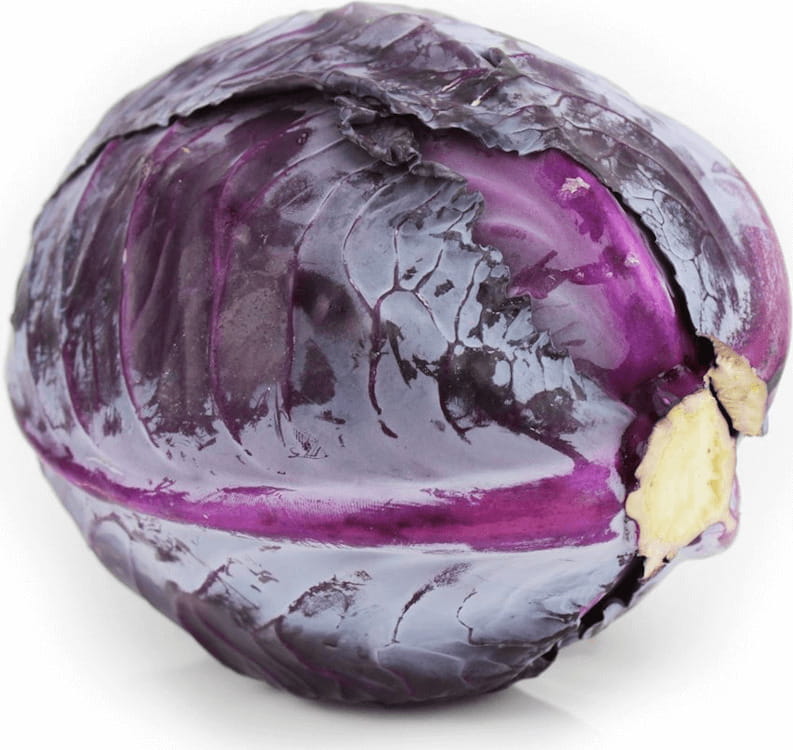MULTIPACK (kg) - RED CABBAGE, FRESH ORGANIC (approx. 10 kg)
- Regular price
- €27,44
- Regular price
-
- Sale price
- €27,44
- Unit price
- per
Couldn't load pickup availability
Description
x - can help with weight loss
- Source of vitamins and minerals
- excellent for salads
Cabbage is a leafy plant from the cabbage family. In the wild, it is mostly found in Europe, especially in the Mediterranean. Its many species, crosses, and varieties are grown as a vegetable in many parts of the world. Cabbage's relatives include Brussels sprouts, broccoli, cauliflower, kohlrabi, and kale.
Contrary to popular belief, cabbage is a healthy, not-so-digestible vegetable. It owes its bad reputation mainly to heavy, high-calorie additives such as bacon or knuckle of pork. 100 g of cabbage contains about 40 kcal and is rich in vitamins - A, B, C, E and K - and minerals - calcium, potassium, magnesium and iron.
Cabbage can be prepared in many ways. Most often it is served raw in the form of salads, but nothing prevents you from boiling, frying or stewing it. Among the traditional dishes of Polish cuisine that cannot be missed, we should mention bigos, stuffed cabbage and cabbage soup. In search of new culinary experiences with its use, it is also worth trying Asian dishes.
Red cabbage is reddish-purple in color and has a smaller head than its white cousin, but rewards it with a more compact consistency, it also packs more vitamins than the former.
RETENTION RECOMMENDATION
Store cool and dry
similar products
- Regular price
- €27,44
- Regular price
-
- Sale price
- €27,44
- Unit price
- per
- Regular price
- €27,44
- Regular price
-
- Sale price
- €27,44
- Unit price
- per
- Regular price
- €27,44
- Regular price
-
- Sale price
- €27,44
- Unit price
- per
- Regular price
- €27,44
- Regular price
-
- Sale price
- €27,44
- Unit price
- per
- Regular price
- €27,44
- Regular price
-
- Sale price
- €27,44
- Unit price
- per
- Regular price
- €27,44
- Regular price
-
- Sale price
- €27,44
- Unit price
- per
- Regular price
- €27,44
- Regular price
-
- Sale price
- €27,44
- Unit price
- per
- Regular price
- €27,44
- Regular price
-
- Sale price
- €27,44
- Unit price
- per
- Regular price
- €27,44
- Regular price
-
- Sale price
- €27,44
- Unit price
- per
- Regular price
- €27,44
- Regular price
-
- Sale price
- €27,44
- Unit price
- per
Recently Viewed Products
- Regular price
- €27,44
- Regular price
-
- Sale price
- €27,44
- Unit price
- per
- Regular price
- €27,44
- Regular price
-
- Sale price
- €27,44
- Unit price
- per
- Regular price
- €27,44
- Regular price
-
- Sale price
- €27,44
- Unit price
- per
- Regular price
- €27,44
- Regular price
-
- Sale price
- €27,44
- Unit price
- per
- Regular price
- €27,44
- Regular price
-
- Sale price
- €27,44
- Unit price
- per
- Regular price
- €27,44
- Regular price
-
- Sale price
- €27,44
- Unit price
- per
- Regular price
- €27,44
- Regular price
-
- Sale price
- €27,44
- Unit price
- per
- Regular price
- €27,44
- Regular price
-
- Sale price
- €27,44
- Unit price
- per
- Regular price
- €27,44
- Regular price
-
- Sale price
- €27,44
- Unit price
- per
- Regular price
- €27,44
- Regular price
-
- Sale price
- €27,44
- Unit price
- per
- Choosing a selection results in a full page refresh.











